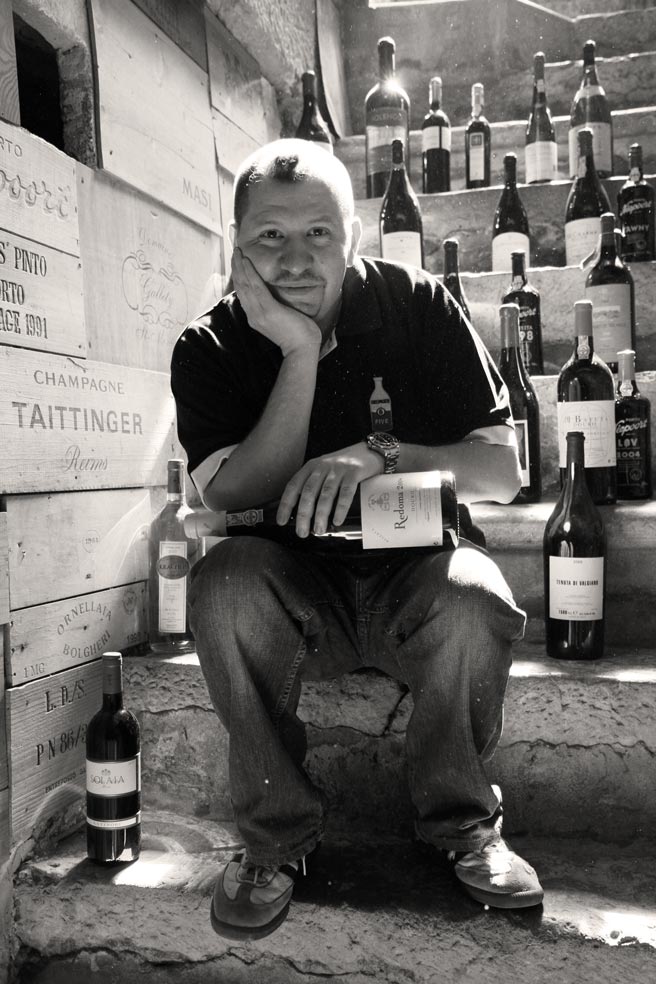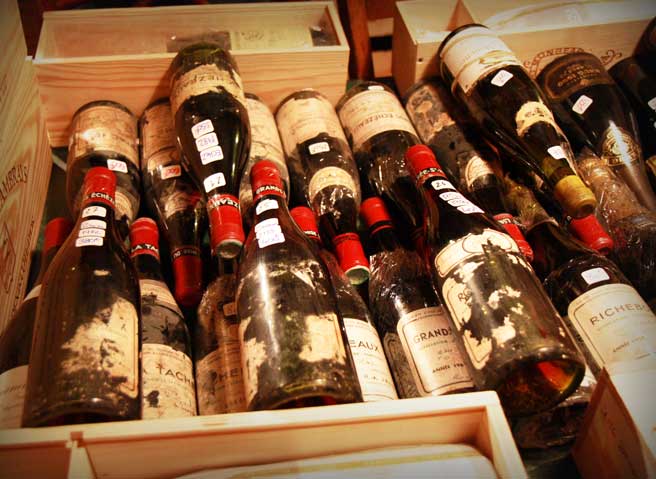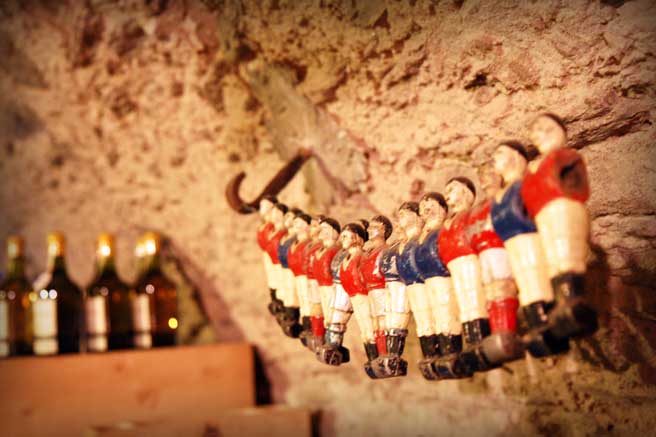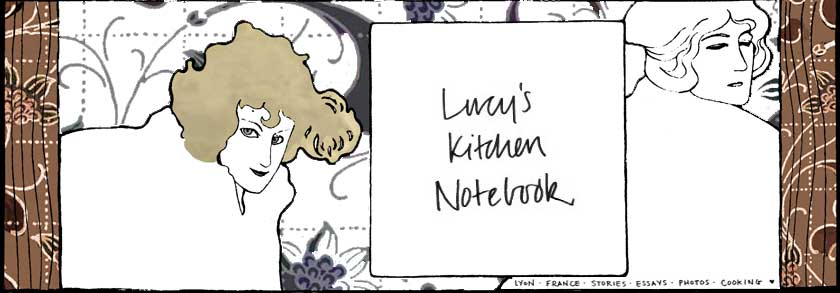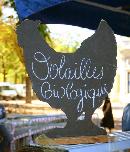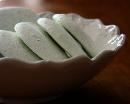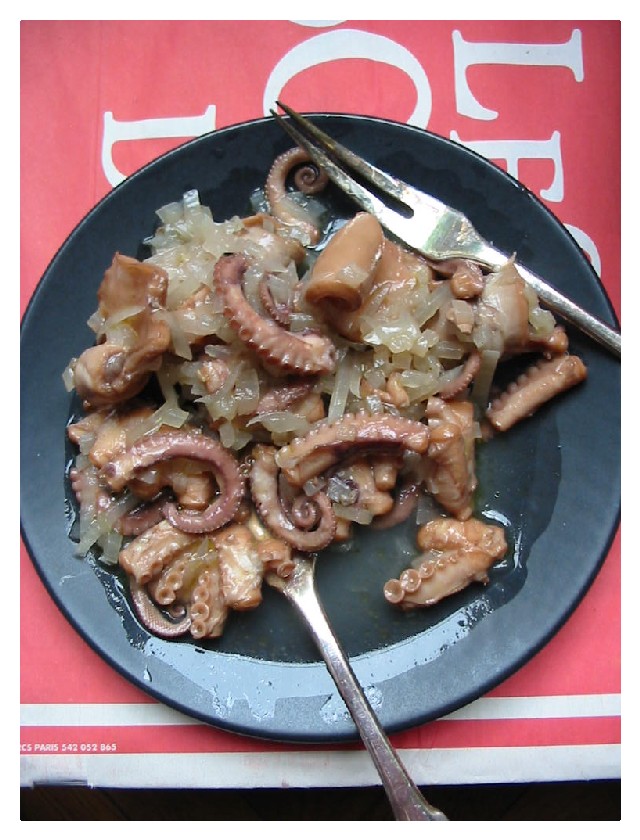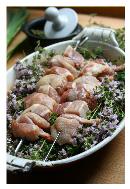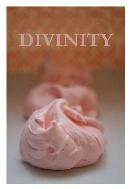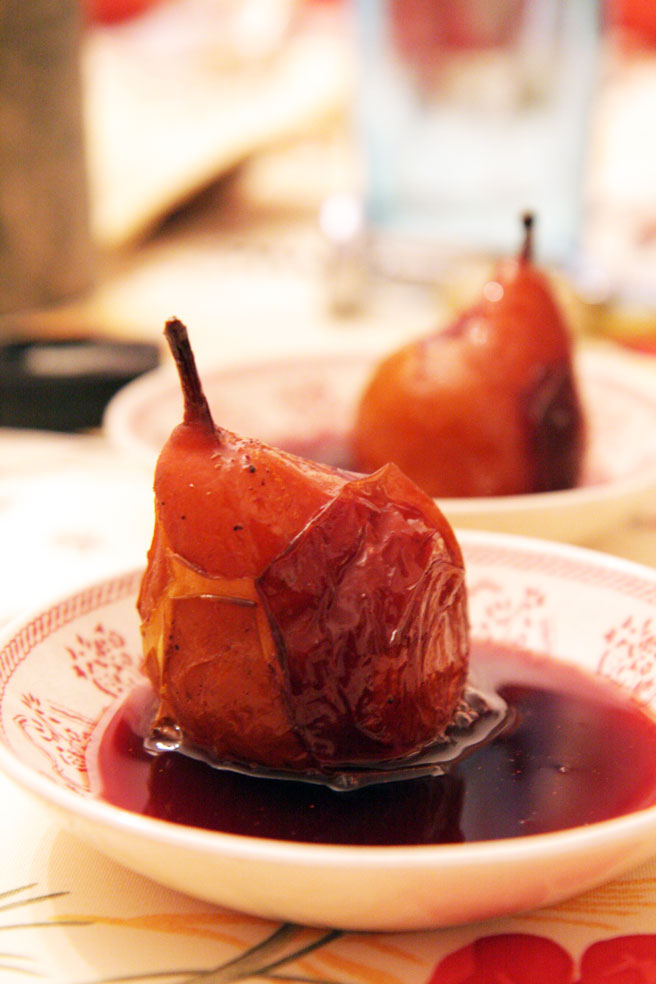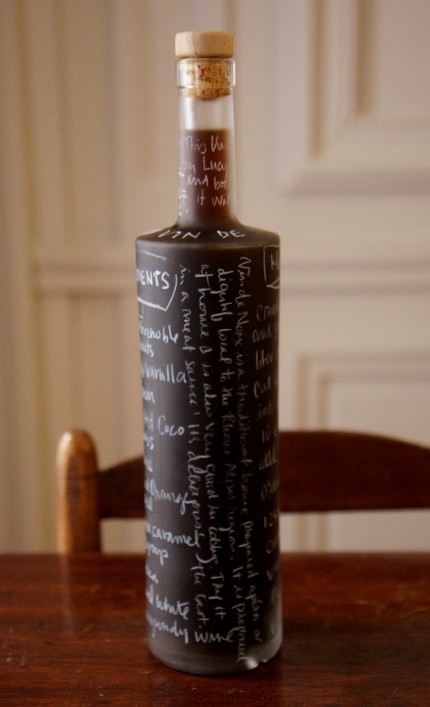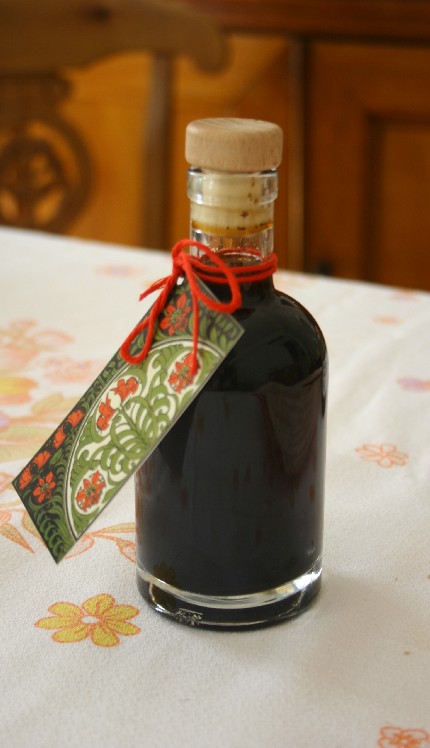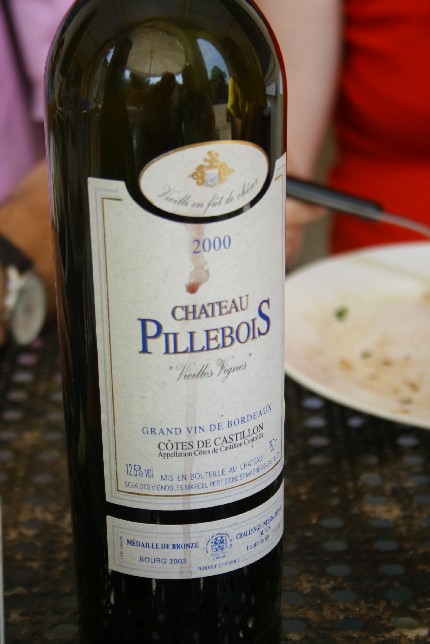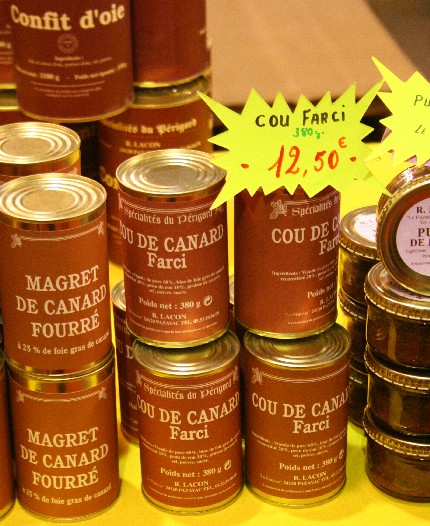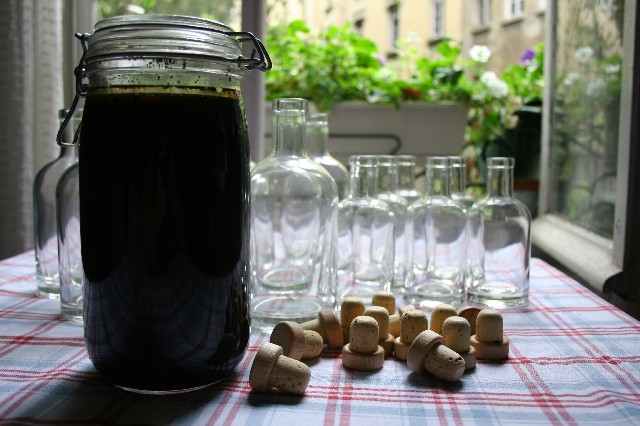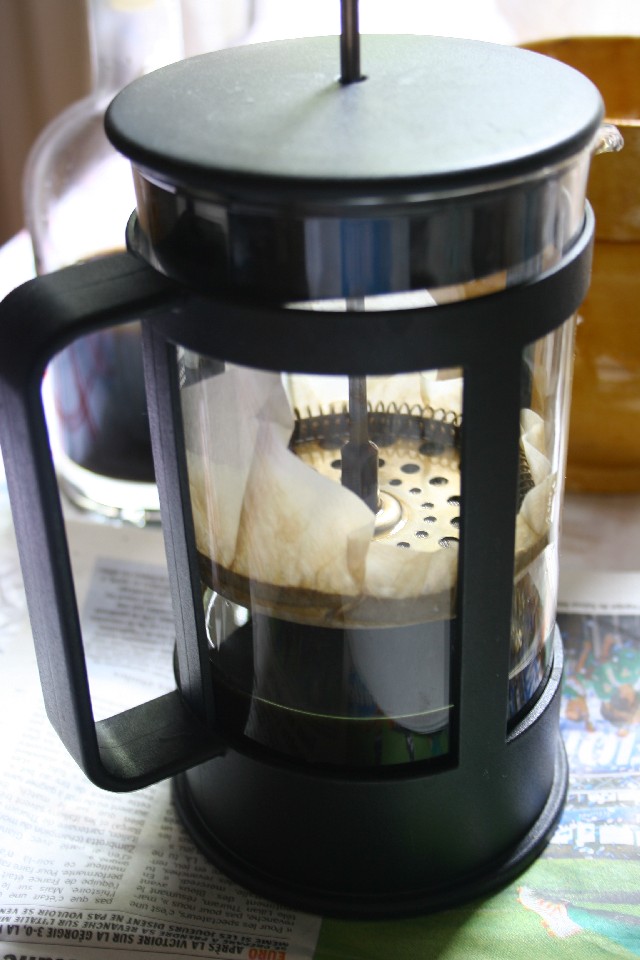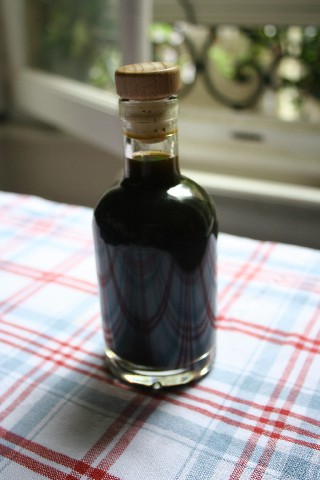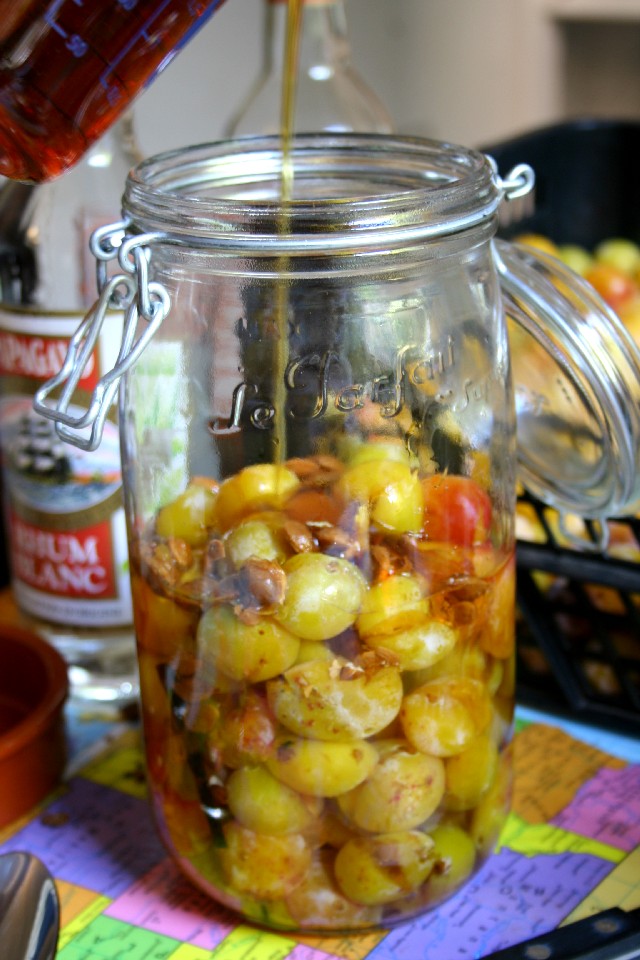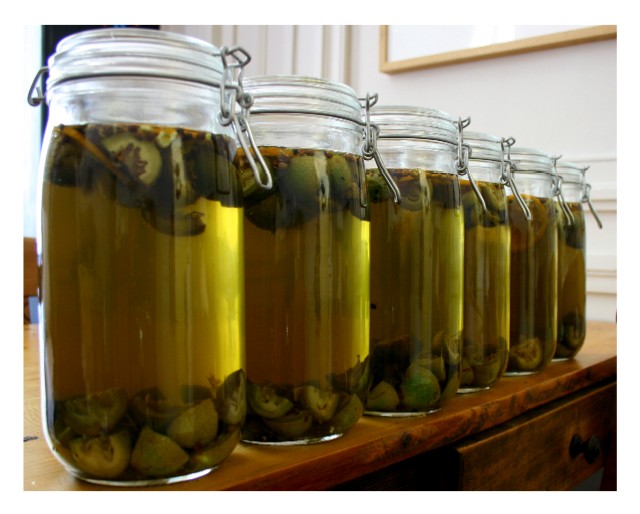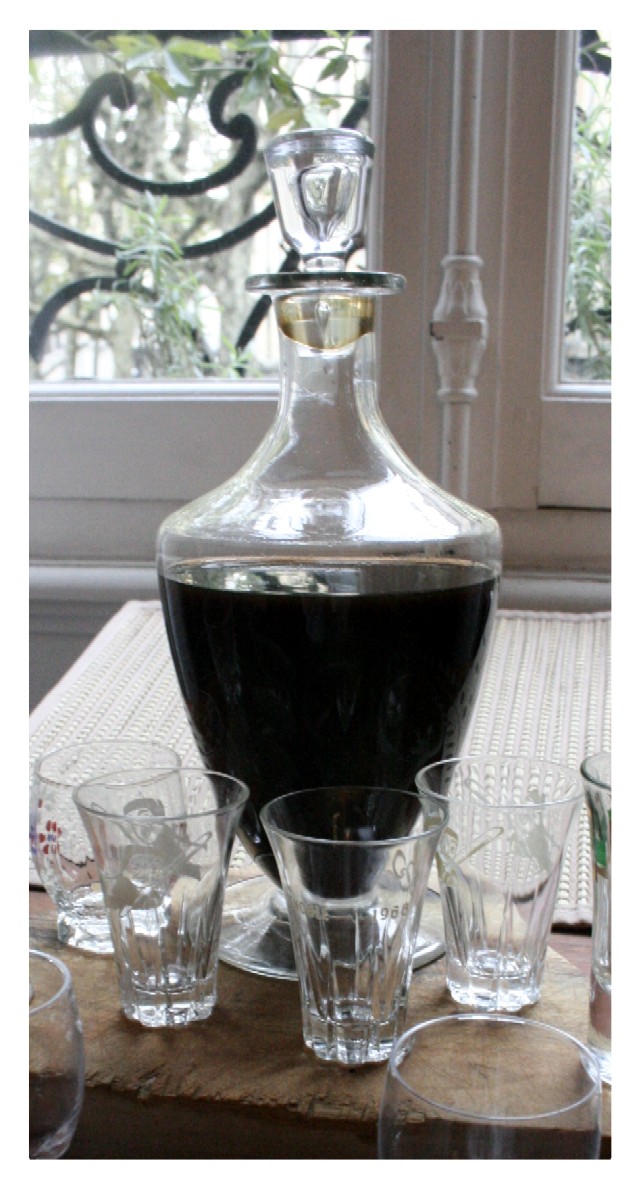 In France
In France, a
vin maison is an aperetif or digestif consisting of either a wine, an
eau de vie, or a mixture of both that has been infused over a period of several months with a special home mix of flavorings. Bitter oranges from the garden, green walnuts, local herbs, and wildflowers all find their way into home recipes. There is always a bit of anticipation when people bring out the unmarked bottle containing their
vin maison.
Under normal circumstances, if you drink enough
vin maison together with its maker, you’re bound to be offered a bottle. If you bring the empty bottle back for a refill and grease the works with adoring compliments, you might then ask for some enlightenment on the proportions and secret additions. This of course includes the few tips that always never seem to make it into a written recipe.
We’d been celebrating an aunt’s birthday all day, the horseplay by the pool was over, the children were sedated and staring into the candle flames, dessert dishes cleared. Mamie had already been delivered home, and out came the
Genepi Maison.
I have had
Genepi a hundred and one times. For some reason we’re always being offered commercially produced bottles of the stuff as gifts every time a friend goes up to the mountains. The times I tasted
Genepi, I was less than impressed with its cloying sweetness that accosted my jaw and coated my throat, and that bitter aftertaste. It was the
Genepi Maison that brought me to a catharsis of taste.
“Now,” I proclaimed to the table, “I understand Genepi.” It had been a long day. It had begun before noon with a huge glass bowl of what Genevieve calls "sangria" and cousin Seb's anchoiade to start us out nice and thirsty. Although my proclamation could have been considered to be exaggerated by anyone looking in from the outside, it was taken seriously by my after dinner companions, as it should have. I was serious.
The flavor was clear and complex, it had a life, it spelled out the mountains, air, soil, and flowers. I had never had real genepi before, I realized, the moment this elixer touched my lips.
It was the brother of the husband of the sister of the mother in law that warned – “
Attention, these family secrets are closely guarded.” The table went silent, and I sat mesmerized as the candles burned down and I was drawn through the spiraling path into the tale of this family’s
Genepi Maison.
Every year, the papi of the tired children at the table takes their fathers up to the secret places he knows in the Alps where the genepi flower grows. Mind you, picking genepi will get you thrown into prison, it’s illegal to gather because it is endangered. At one time, the tourists began to rip up and destroy all of the delicate flowers, which grows only at very high altitudes, above the clouds, in very shallow crevices in the rocks, with only a little bit of rocky soil and nothing for their roots to hold on to.
People would try and pull the blossoms and their stems off and rip out the whole plant, killing it. Today only a few plants are left, and they are protected. Papi, as he has all his life, knows how to gather the flowers in such a way that the plant is never damaged and it always grows back, and for that reason, he knows the secret places where they grow year after year, and this secret is never divulged to anyone except his sons.
The path is steep and treacherous, and far off the beaten hiking trails in the mountains, even a trained guide would find the way to be difficult. But each year Papi continues his tradition to take his sons up for a few days in the mountains, and they gather about 400 flowers with their stems over the course of about 3 days, leaving the plants to push forth again the next year where they can bloom again.
They don’t get their stems from one particular place, there is a whole list written in Papi’s mind, and according to the weather and the way the earth and vegetation has moved by landslides and the deep winter snow and so forth, he makes the decision to gather the stems in any particular area.
There are two types of Genepi plant: genepi jaune, and the genepi bleu; the bleu is more rare and flavorful than the jaune, and is not identifid by the color of the blossom, because the blossom for both types is still the color yellow. The genepi bleu has an argentine / silver tint to the stem and leaves. Bleu is the best and most flavorful kind, and is the kind Papi gathers.
They bring the cuttings home and dry them on paper outside, and when they are sufficiently dry, the blossoms with their stems are inserted whole one by one into the bottles, 40 blossoms with their stems to a bottle. The stems, once they are in the bottles, are covered with alcohol which has been diluted to 45 percent, and then the bottles are stopped up and the blossoms steep for 40 days. At the end of the 40 days, the Genepi is filtered and put back into the bottles. Sugar is added after filtering, to taste, and every year the batch requires a different amount of sugar.
You use just plain sugar from the sack, and begin the sugaring with 12 teaspoons of sugar in the bottle. Papi covers the mouth of the bottle with his thumb, shakes it well, and then takes a sip. If there’s enough sugar according to his taste, the bottle is re-corked and it is ready for storage. It will keep for years and years, although this family normally drinks their stock every year.
At that point I considered asking for another serving of this delicious Genepi, since hearing the story made the drink seem even more delectable than before, but I thought better of it. It was truly precious indeed.
I did ask a question – “If Genepi is a protected plant, how come we see the drink for sale everywhere in the Alpes?” Ah, very good question. “That Genepi is made from extracts of cultivated plants. They add lots of sugar to try and hide the taste.” It's terrible stuff.
The storyteller went on to tell the story of the year that they were caught by a terrible landslide when out gathering genepi, and their path back home was completely blocked. Luckily they were able to make their way down to a different town in two days and call his wife to pick them up there. It was a harrowing tale.
He finished with some sage advice: “Don’t even think about hunting genepi yourself. It’s dangerous. We go with Papi because he needs someone to accompany him in the mountain.”
Starry eyed, that evening I went home as if in a dream, and thoughts of home made Genepi filled me with hope and joy as I imagined myself adorned in an alpine traditional gown and carrying a hand woven basket from genepi patch to genepi patch. However the next day, when I was thinking about all of this, I realized that it was the Genepi that got to my head!
The tradition belongs to that family, and since they have done it for generations at home and in small quantities, with respect to the plant, they have a something very special. Please don’t try this one at home or on vacation, folks.
There are so many other wonderful recipes for home steeped vin maison, we can be happy with plants, fruits and nuts that grow locally which can become steadfast traditions linked to the land that nourishes us and that which we can pass to our children. Why not get some local nuts, fruits, or flowers and make your own tradition?
Labels: Vin Maison and Liqueurs, Wine, Winter 05-06


